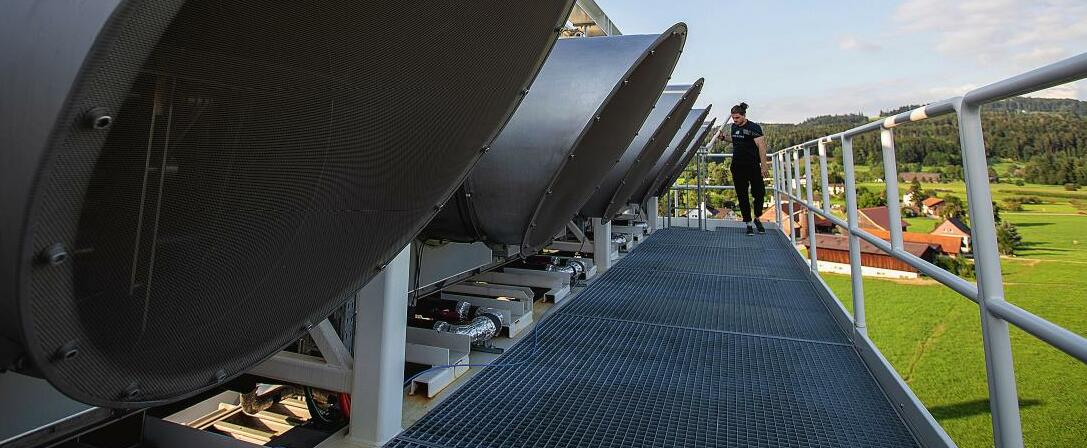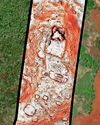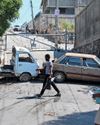
For some scientists, they are the inevitable next stage of staving off the existential threat of climate chaos. For others, they should not even be talked about.
Carbon dioxide removal (CDR) technologies, which provide a means of sucking carbon out of the atmosphere, are one of the hottest, and most controversial, areas of climate research.
The debate over whether and how to develop CDR has been ignited by the release in March of the final section of the comprehensive review of climate science by the Intergovernmental Panel on Climate Change (IPCC). The report found that ways of capturing and storing carbon dioxide, though expensive, may play a role in trying to keep global temperatures within safe bounds.
But scientists and policymakers are divided. Some say the technology must be the priority for research. Others urge caution, and warn against putting faith in untested technology before we have even fully deployed the reliable low-carbon technologies we already have, such as renewable energy.
John Kerry, the US special presidential envoy for climate, talked of his concerns. "Some scientists suggest it's possible there could be an overshoot [of global temperatures, beyond the limit of 1.5C above pre-industrial levels that governments are targeting] and you could clawback, so to speak; you have technologies and other things that allow you to come back. The danger with that... is that according to the science, and the best scientists in the world, we may be at or past several tipping points that they have been warning us about for some time."
The former UK government chief scientific adviser Sir David King strenuously disagrees. He believes CDR of many kinds will be needed, along with the means to "repair" the climate, such as by refreezing the ice caps, because the world is almost certain to overshoot the global target limit of 1.5C above pre-industrial levels.
This story is from the {{IssueName}} edition of {{MagazineName}}.
Start your 7-day Magzter GOLD free trial to access thousands of curated premium stories, and 9,000+ magazines and newspapers.
Already a subscriber ? Sign In
This story is from the {{IssueName}} edition of {{MagazineName}}.
Start your 7-day Magzter GOLD free trial to access thousands of curated premium stories, and 9,000+ magazines and newspapers.
Already a subscriber? Sign In

Finn family murals
The optimism that runs through Finnish artist Tove Jansson's Moomin stories also appears in her public works, now on show in a Helsinki exhibition

I hoped Finland would be a progressive dream.I've had to think again Mike Watson
Oulu is five hours north from Helsinki by train and a good deal colder and darker each winter than the Finnish capital. From November to March its 220,000 residents are lucky to see daylight for a couple of hours a day and temperatures can reach the minus 30s. However, this is not the reason I sense a darkening of the Finnish dream that brought me here six years ago.

A surplus of billionaires is destabilising our democracies Zoe Williams
The concept of \"elite overproduction\" was developed by social scientist Peter Turchin around the turn of this century to describe something specific: too many rich people for not enough rich-person jobs.

'What will people think? I don't care any more'
At 90, Alan Bennett has written a sex-fuelled novella set in a home for the elderly. He talks about mourning Maggie Smith, turning down a knighthood and what he makes of the new UK prime minister

I see you
What happens when people with acute psychosis meet the voices in their heads? A new clinical trial reveals some surprising results

Rumbled How Ali ran rings around apartheid, 50 years ago
Fifty years ago, in a corner of white South Africa, Muhammad Ali already seemed a miracle-maker.

Trudeau faces 'iceberg revolt'as calls grow for PM to quit
Justin Trudeau, who promised “sunny ways” as he won an election on a wave of public fatigue with an incumbent Conservative government, is now facing his darkest and most uncertain political moment as he attempts to defy the odds to win a rare fourth term.

Lost Maya city revealed through laser mapping
After swapping machetes and binoculars for computer screens and laser mapping, a team of researchers have discovered a lost Maya city containing temple pyramids, enclosed plazas and a reservoir which had been hidden for centuries by the Mexican jungle.

'A civil war' Gangs step up assault on capital
Armed fighters advance into neighbourhoods at the heart of Port-au-Prince as authorities try to restore order

Reality bites in the Himalayan 'kingdom of happiness'
High emigration and youth unemployment levels belie the mountain nation's global reputation for cheeriness